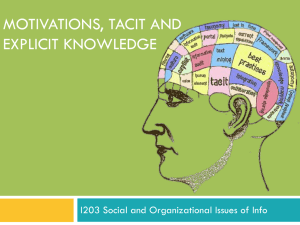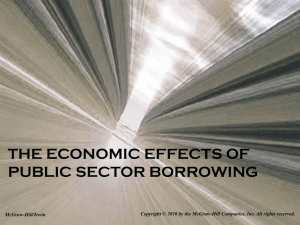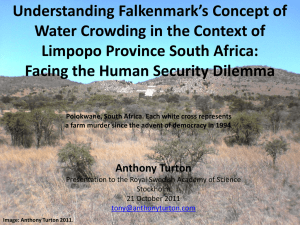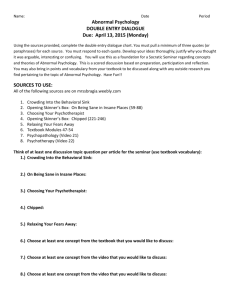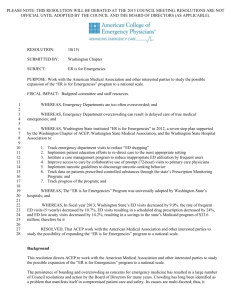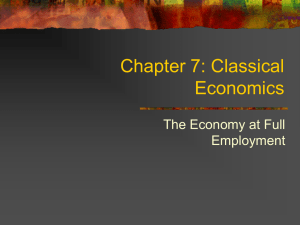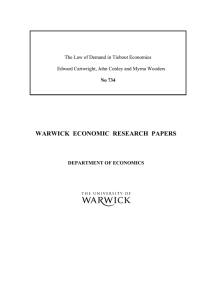Overpopulation and Crowding Fri. 10/12, Wed. 10/17, Fri. 10/19
advertisement
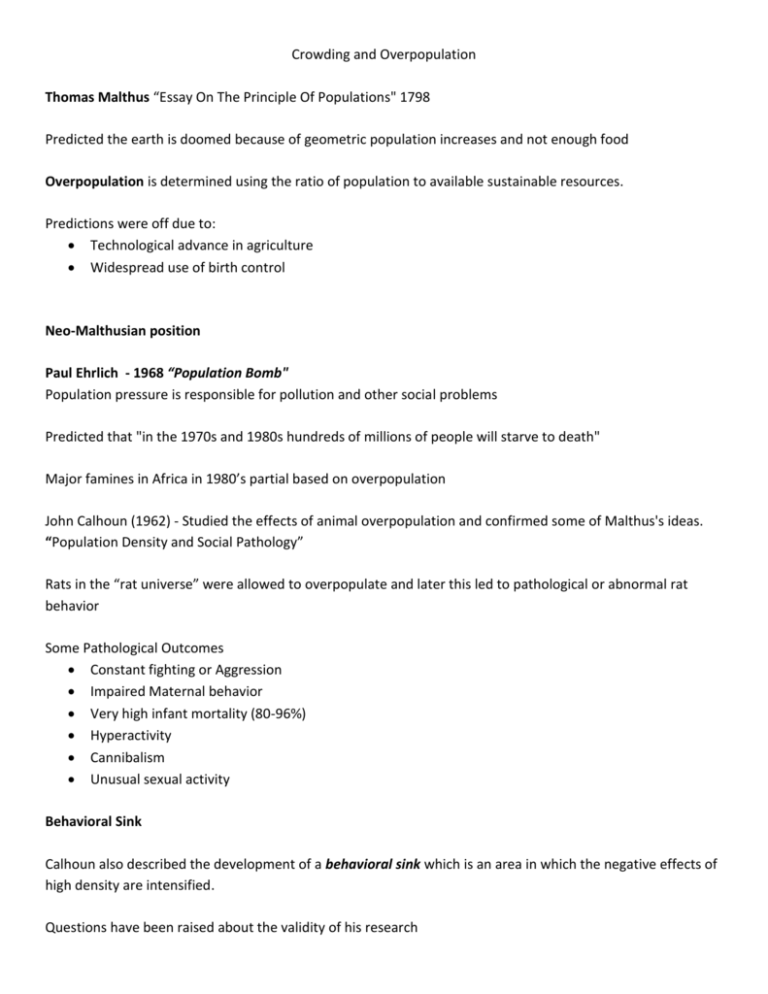
Crowding and Overpopulation Thomas Malthus “Essay On The Principle Of Populations" 1798 Predicted the earth is doomed because of geometric population increases and not enough food Overpopulation is determined using the ratio of population to available sustainable resources. Predictions were off due to: Technological advance in agriculture Widespread use of birth control Neo-Malthusian position Paul Ehrlich - 1968 “Population Bomb" Population pressure is responsible for pollution and other social problems Predicted that "in the 1970s and 1980s hundreds of millions of people will starve to death" Major famines in Africa in 1980’s partial based on overpopulation John Calhoun (1962) - Studied the effects of animal overpopulation and confirmed some of Malthus's ideas. “Population Density and Social Pathology” Rats in the “rat universe” were allowed to overpopulate and later this led to pathological or abnormal rat behavior Some Pathological Outcomes Constant fighting or Aggression Impaired Maternal behavior Very high infant mortality (80-96%) Hyperactivity Cannibalism Unusual sexual activity Behavioral Sink Calhoun also described the development of a behavioral sink which is an area in which the negative effects of high density are intensified. Questions have been raised about the validity of his research Defining Crowding Big debates has been over definition Until the 1970's the difference between density and crowding was only vaguely recognized by researchers and writers Related concepts - Density vs. Crowding Density refers to the physical conditions associated with the number of people in given amounts of space (Objective Measure) Crowding refers to an individual's subjective experience of situations involving density (Subjective Measure) Appraisal of density, feeling or emotion when there is too many people or too little space Freedman (1975) “Crowding and Behavior" uses the term crowding to mean both the objective and subjective concept (Density/Intensity theory) Stokols (1972) suggested that density is probably necessary but insufficient by itself to elicit the experience of crowing Moos (1976) Integrative Model of Crowding includes other factors Density Concept Density is not simply the ratio of people to space Population density can be measured and manipulated in numerous ways Two predominant approaches Social density Spatial density Social density involves varying group size while keeping area constant Spatial density involves changing the space while holding group size constant. Methods often lead to different results Social density involves both group size (n) and space per individual. They change at the same time Spatial density involves overall room size and space per individual. Social density seems to cause more negative responses especially among males Negative response include: unpleasant emotions or affect, physiological arousal, diminished attraction toward strangers, and an inability to perform complex tasks. Other Types Of Density Inside density is defined as the density in one's primary area of functioning (e.g., home or classroom) # of people per spatial unit within a dwelling #of residence per room or house Outside density is defined as the density in secondary areas such as the community or city, school, or shopping center Primary Environments Stokols (1976) suggest that density in primary environments have more significant effects than secondary environments Frequently used in sociological-correlational studies of the effects of population density on pathology and illness. Consequences of High Density Crowding is complex with complex causes and consequences The effects of high density are not always negative Depends on various personal, physical and cultural factors In his 1975 book Crowding and Behavior, Jonathan Freedman argued that crowding is neither good nor bad. Instead, in his density-intensity theory of crowding he suggests that as density increases, the intensity of our moods and behavior increases. pleasant even more pleasant unpleasant even more unpleasant Determinants and Consequences of Crowding Personal Characteristics Personal Control – less stress for crowding o Cognitive – sense of predictability o Behavioral – one’s actions influence outcomes o Decisional – selecting one’s goal Sociability – more tolerance for crowding Expectation (Expected – less crowding) Experience with crowding Sometimes helps, sometimes not Primary environments (houses, apartments) – experience with crowding does not help Secondary environments (street, shops etc.) – experience with crowding increases tolerance Psychological disturbances o The more disturbed the higher sense of crowding Mood o Negative less tolerant of crowding Physical Setting and Design Long corridors more crowding High-rises more crowding Higher floors less crowding Sunny rooms less crowding Bright colors less crowding High ceilings less crowding Placement of furniture o Sociopetal placement of furniture less crowding Andrew Baum & Steven Valins (1977) studies in dormitories Two types of dormitories Typical – long corridors (lounge) Mini-apartments (suites) Same number of residents in rooms and on the floor Same space per person Investigation of social relations and perception of crowding Results Corridor Residents Perceived their floor to be more crowded Felt forced into more unwanted interactions Indicated a greater desire to avoid others (withdrawal behavior) Less sociable with others Sociocultural – Social Setting One social perspective focuses on the limitations of freedom to choose among a number of behavioral options in dense environments Acccording to Stokol’s model of crowding Thwarting (goal interference) is important in determining the severity of crowding Stokol’s Typology of Crowding - Thwarting can be: Neutral or Personal Primary or Secondary environments Personal thwarting is deliberately directed from another person against the self Crowding can occur in environments that are central in our lives (Primary) or more temporary and relatively unimportant (Secondary) places Personal thwarting more stressful crowding Primary environment more stressful crowding Consequences of Crowding Physiological consequences e.g., health and stress related problems Behavioral consequences e.g., learned helplessness Emotional/Cognitive consequences e.g., negative affect, information overload Social withdrawal Performance decrease Complex tasks, requires physical interactions Helpful behaviors decrease Humor increases Aggression increases (especially for Males) Prisons Prisons have been a useful site for studying the long-term effects of density and crowding Most comprehensive study Cox, Paulus and McCain (1984) Archival data and additional research on physiological measures of 1500 inmates Overall: Spatial density does not seem to be as important a factor as is commonly believed in producing negative effects. Social Density Comparisons among single cells and multiple occupant cells indicated that higher numbers of inmates per cell were associated with higher: perceived crowding illness complaint Blood pressure Death Rates Increases in population in prisons were associated increased rates of Death (r = .81) Suicide Disciplinary infraction Psychiatric commitment Their Conclusions Single cells produce the smallest number and degree of negative effects The degree of negative consequences associated with crowding depends on a broad range of factors: o space o number of residents in a unit o bunk type o time in the cell o nature of the inmate population

